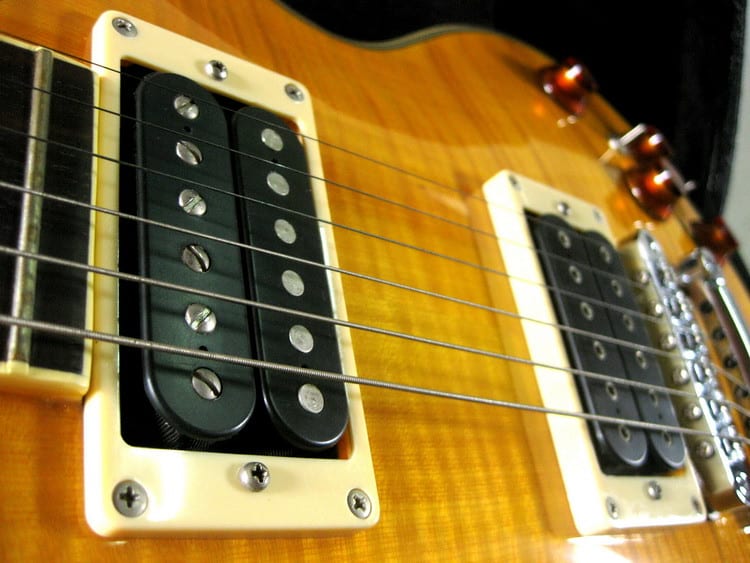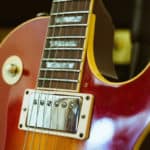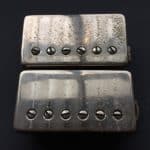Pickups are something that is just there for many players.
But have you ever wondered about how they work, and how big is their impact on your final instrument’s sound? Are all pickups the same? Why should you care?
Chances are you have, and you ended up here.
I will try my best to help you with your curiosity
However, if you just want a short answer about this topic, here it is:
Pickups make a big difference in the sound of a guitar. They are the final defining factor of the output tone of an electric instrument. Pickups take the tone produced by every other component and variable in the guitar and filter it with their distinct EQ. Pickup tone can be affected by height and position.
If you want to stick with me for a bit longer, in this article, we will dive deep into how pickups shape a guitar’s tone, and what other variables, related to them, can also make a difference.
By the end of this post, you will have a clearer idea of the importance of guitar pickups and their effect on your instrument’s tone.
Are you ready?
Let’s get started.
How do pickups affect tone?
Pickups are the heart of an electric guitar. And some might argue that there are other parts as important, but I don’t think so. Without pickups, there’s no electric guitar. There might be guitar, though, but not electric.
They are transducers. A transducer is a device that transforms some kind of energy into another. In this case, pickups translate the kinetic energy of the vibration of strings into electric energy that can be interpreted and transformed into sound.
Do you want me to go just a bit more technical? Ok, but for those who don’t, you can skip the next paragraph.
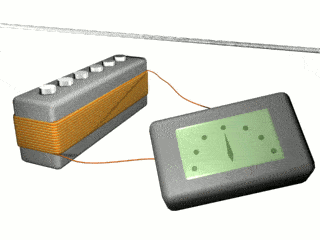
Pickups rely on magnetism. They’re actually a series of magnets working together in generating a magnetic field around them. When the strings of the instrument start vibrating, this field moves in reaction to that vibration. This disturbance of the field is picked up (precisely) by the pickups and transformed into weak electric signals that can be interpreted by an amp or mixer and turned into sound when put through a speaker.
Given the way pickups work, it’s easy to understand that even the slightest change in how they are built, how they are mounted, their height, their components, and whatever other variables you could imagine, will affect how they interpret the vibration of the strings.
The tone of a guitar is defined by many factors, or even, all of the factors you could imagine. Some have a bigger impact such as wood choices, construction, and pickups. Pickups are the final step in the “tone synthesis” process, and I like to think about them as a final static EQ.
They cut the tone into their own shape.
Imagine you are painting something. You can pick between many colors and materials to paint on. Let’s say that you painted your piece of art on a square sheet of paper. Think of that as your guitar’s tone. Now enter the pickups: Imagine that your paint now has to be put in a round frame to be displayed. The framing part of the process will cut the sharp borders of your painting and leave them out of the final product. That’s how pickups shape your instrument’s sound.

What makes different pickups sound different?
Different kinds of magnets and wires (and the quantity of wiring) in a pickup will get vibrations in a dissimilar manner, and this is exploited by pickup builders to “voice” them differently. Metal pickups have a higher output and scooped mids, while jazzy ones could have the opposite features.
As I mentioned before, every piece of a guitar has an effect on its tone. Some parts are more influential than others. With pickups, the same logic applies.
Different pickups will generate slightly different magnetic fields that will pick up different aspects of how the strings vibrate.
Are expensive pickups better?
Expensive pickups are better to an extent. The returns on exclusivity are diminishing. What you get when paying a higher price tag for pickups is customization, specific voicings or specs that you can’t get elsewhere, and premium materials. Objectively they are better, but you have to decide how much better.
If you are looking to upgrade the pickups of an affordable guitar, the value you will get for each dollar invested will be higher than if you are swapping pickups on a premium instrument in a raw tone improvement analysis.
Cheap pickups can be noisy and sound darker. A nice set of pickups will surely make your guitar sound clearer, more defined and reduce noise to a minimum.
Beyond this quality standard, it’s all a matter of taste, exclusiveness, and customizations.
Do pickup covers affect tone?
Pickup covers do affect the tone of your instrument. If you remove the covers you will get a more aggressive sound, with a slightly higher output and more treble presence. Covering a pickup will get you the opposite results.
Will a pickup sound better after you remove its cover? It’s all a matter of taste. I prefer covered pickups since they sound less sharp to my ears. Also, I think they look better.
But this will all depend on your guitar and how they work with the rest of the pickups in it. Some players choose to remove the cover of their bridge humbucker pick up and keep the one on their neck pickup. This might give their rhythm tones more high-end punch and make their leads smoother.
Does pickup height affect tone?
Pickup height does affect tone. Pickups generate a magnetic field around them. Their height will define the zone of influence of this magnetic field. You can’t miss the strings, but surely you can find a sweet spot where its interaction with the strings is optimal for the tone you look for.
Lower pickup heights will result in less output since the strings are further away from them, and a loss in bass response.
Does pickup mount affect tone?
The way pickups are mounted in a guitar could influence tone. Some players argue that the more direct is the contact of the pickup with the instrument’s body, the more responsive it will be to its vibrations. However, tighter mounts such as in dog ear P90s have their drawbacks such as fixed pickup height.
This, however, is a very slight difference, that only a few players can perceive. What will surely generate a more significant effect is the pickup height resulting from different kinds of mounts.
Does pickup position affect tone?
Pickup position has a strong effect on a guitar’s tone. This is because different parts of the string will vibrate differently producing distinct overtones. That’s why bridge pickups sound completely different from neck pickups even in cases where they are the exact same model.
You can test this difference in sound on any guitar just by playing with your picks or fingers in different parts of the same string. As you go towards the bridge the tone will get sharper and with a bigger presence of high end, and when you play near or over the neck, the output is smoother and more bassy.
Overtones are frequencies that combined make for the timbre of a sound. Think of them as the ingredients of a certain sounding note. They define pitch and how that pitch sounds. With the way strings vibrate, different overtones can be excited or turned down just by choosing where to pluck them.
Other factors that affect the tone of a pickup
Pickups are a rather complex system, and as you can imagine, many subtle details could have a noticeable impact on the sound output they produce.
Here is a list of factors, to summarize, and in no particular order, that will affect the tone of a pickup:
Position and size
- The closer the pickup is to the strings, the higher its volume
- The further away the pickup is from the strings, the lower the volume will be, but in this case, this will also generate a lower treble perception and a flatter dynamic response
- The farther the pickup is from the bridge the more a warm and powerful sound will reverberate
- The closer it is placed to the bridge the brighter it will sound, and the more attack it will have
- The wider the magnetic field (humbuckers) the larger the portion of the string will be detected this resulting in a more harmonic rich sound
Technical features
- The length and diameter of the wire used
- The power and type of magnet
- The proximity of the coil to the magnet
- The distance of the coil windings from the magnet
- The height and width of the winding
- The winding tension
Different output levels effect on tone
Pickup output levels will not have an effect on the tone of the guitar. However, the tone of the overall rig will be affected since the guitar signal will be “hotter” when entering the amp. This will make it break up at lower volumes, making it harder to get clean tones and have a different overall response.
Also, different kinds of magnets facilitate contrasting output levels but also different intrinsic EQs, so higher levels will probably come paired with the sound of certain kinds of magnets.
Does pickup resistance mean the same as output?
Resistance is usually a way manufacturers talk about a pickup’s output, however, it means more than that. As resistance goes up, output goes up too, but there’s a point in which output stops climbing and the result of extra resistance is just the tone getting darker.
A pickup with double the resistance of another wouldn’t actually mean that it’s twice as louder, but probably signify that it has a bit more output and that it’s darker.
Different pickup magnet types and their effect on tone
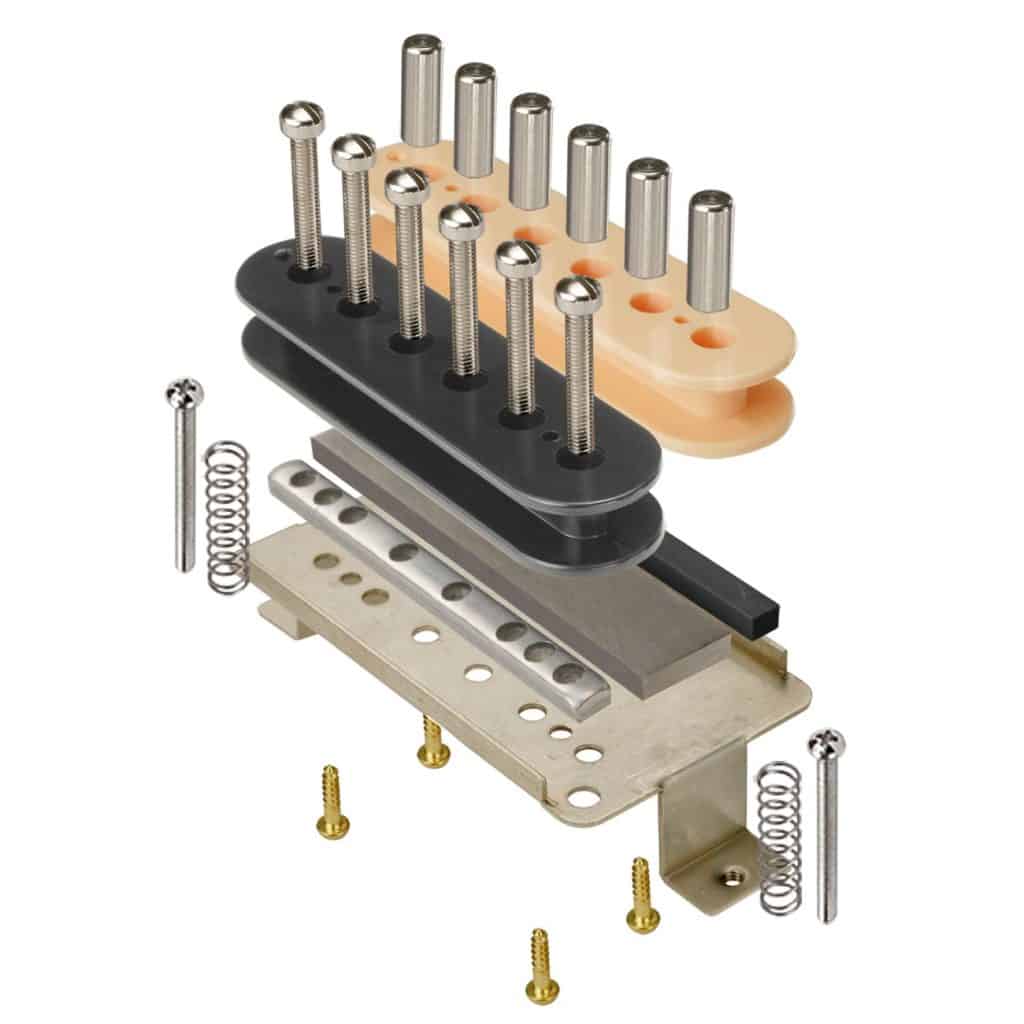
Pickups are made with different magnet types that each, based on their physical and chemical characteristics generates different kinds of magnetic fields.
Each of these pickup types will output different frequency palettes and volumes while having a particular feel to the player.
Alnico II
This kind of magnet has a nice low end, with a warm and rich midrange and treble. Their output is rather low.
Alnico III
This kind of magnet is weaker than Alnico II. It produces more treble and a weaker low end. Its output is even lower.
Alnico IV
This kind of magnet has a pretty flat EQ response. Their output level is in the middle of the road.
Alnico V
This kind of magnet has tight lows, a balanced midrange, and a sharp treble response. Its output is rather high. This is probably the most common magnet in guitar pickups today.
Alnico VIII
This kind of magnet has a very strong mid response, with present highs and big lows. It has an even higher output and a strong magnetic pull. It’s not that commonly used.
Ceramic
This kind of magnet has steep mids, present lows, and a harsh high end response. Their output is the highest on this list. Ceramic pickups are cheaper and are used mostly in affordable instruments. Most players choose to upgrade them to Alnico ones due to their thin and lifeless sound.
Alnico vs Ceramic pickups
Alnico pickups are more expensive than ceramic pickups, come in different output levels, and have contrasting natural EQs. Ceramic pickups sound harsh and have a high output. Most entry-level instruments use this last kind of magnet due to its price. However, most professional players choose Alnico.
Most used magnet type by music genre
| Alnico II | Alnico III | Alnico IV | Alnico V | Alnico VIII | Ceramic |
| Country, Blues, Rock, Folk | Rock, Funk, Blues | Jazz, Pop | Rock, Metal, Funk, Pop | Metal, Fusion | Metal |
Conclusions and recommendations
Whether you are looking for a new guitar or planning on building or having one built, getting to know, at least at a high level how pickups work is, in my opinion, something that will help you make a better informed final decision.
However, here in GearAficionado, I always say that you should always try out every instrument before buying it if you have the chance.
If it’s within your reach, try to get to play completely different guitars to clearly understand where the variation lies, and then start checking out ones closer to the one you preferred the most.
Particularly, I think that changing a guitar’s pickups can make a good tone better, but it can’t make a bad tone sound good.
Finally, don’t forget to have fun. Technicalities for some people get the joy out of getting a new piece of gear. You don’t have to know it all about something that makes you smile. Just go and play the instrument that feels best to you.

Hello there, my name is Ramiro and I’ve been playing guitar for almost 20 years. I’m obsessed with everything gear-related and I thought it might be worth sharing it. From guitars, pedals, amps, and synths to studio gear and production tips, I hope you find what I post here useful, and I’ll try my best to keep it entertaining also.

